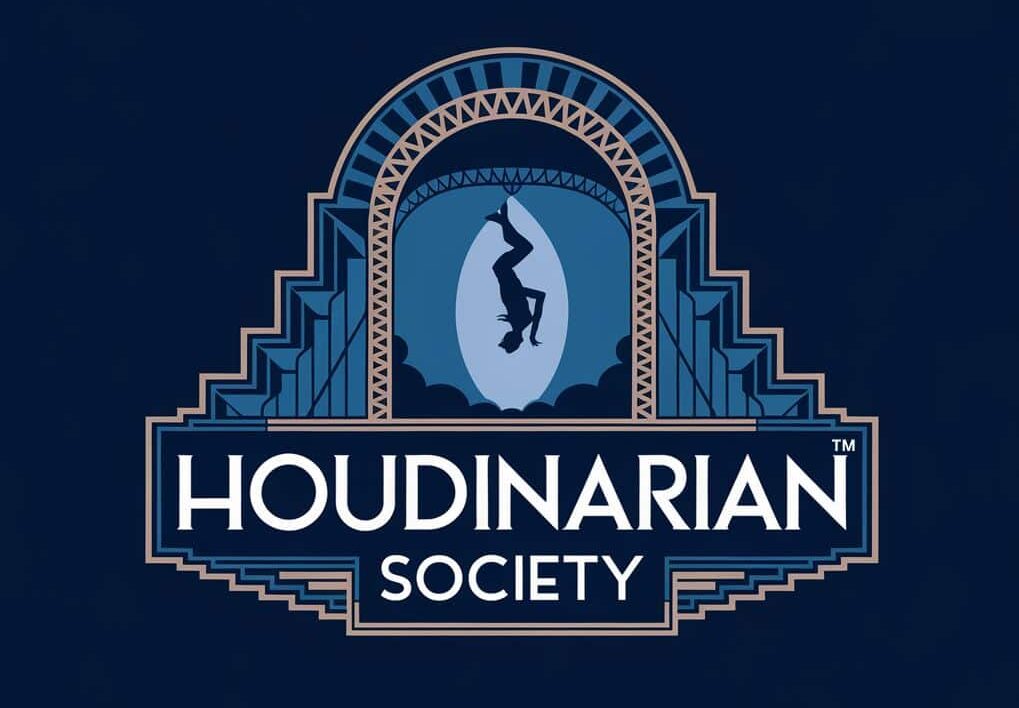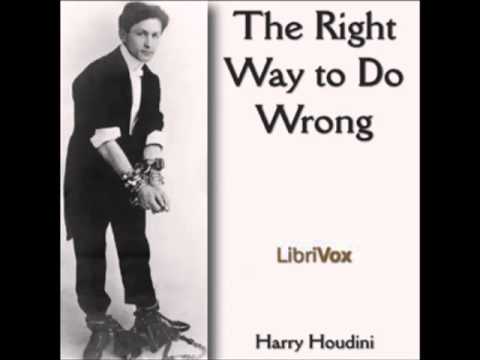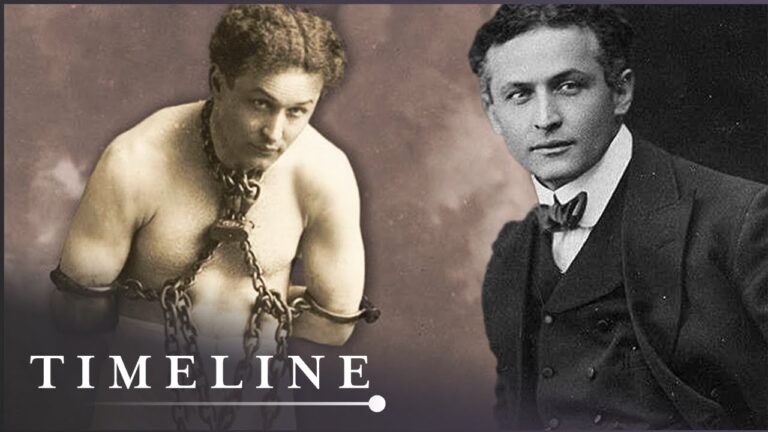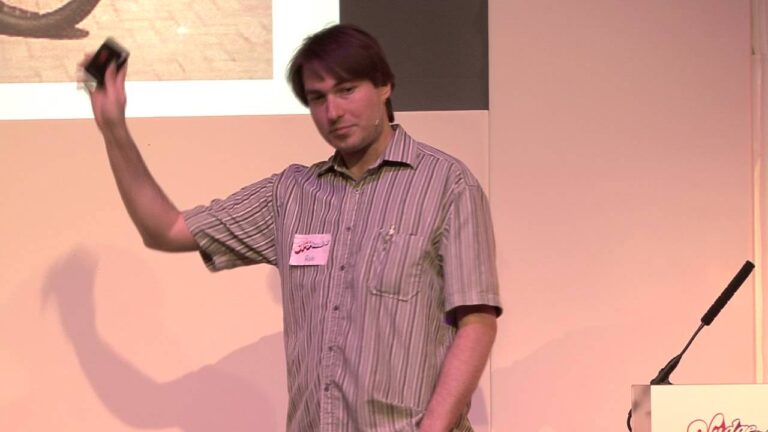Misdirection in Magic: How Houdini Captivated Audiences and Outsmarted His Opponents
Magic relies on the art of manipulating attention and perception – a skill that Harry Houdini mastered better than anyone.
His performances weren’t just about tricks and illusions; they were carefully orchestrated displays of psychological control.
Houdini used strategic misdirection techniques to direct your focus exactly where he wanted it, making you believe you were watching everything while he secretly performed his methods elsewhere.
This mastery of attention control allowed him to escape from seemingly impossible situations while keeping audiences completely unaware of his true methods.
The Water Torture Cell stands as one of his most memorable examples of misdirection at work.
While you focused on the dramatic sight of him suspended upside-down in a tank of water, your mind missed the subtle details that made his escape possible.
The Fundamentals of Misdirection

Magic misdirection works by controlling attention and manipulating perception.
A magician’s success relies on their ability to guide the audience’s focus away from the method while creating a compelling illusion.
Understanding Misdirection in Magic
Misdirection techniques control what you see and think during a performance.
When a magician waves their right hand dramatically, they’re often completing the secret move with their left.
Magicians use two main types of misdirection:
- Physical misdirection: Movement, gestures, and staging
- Psychological misdirection: Story, timing, and emotional engagement
Your attention naturally follows certain patterns. A loud noise draws your eyes. A sudden movement pulls your focus. Skilled magicians exploit these instincts.
Historical Context and Evolution of Misdirection
Harry Houdini mastered misdirection by combining theatrical showmanship with precise timing.
His escapes relied on directing attention away from his subtle movements.
Early magicians used basic distraction techniques like dropping objects or pointing. Modern performers employ sophisticated methods incorporating psychology and stagecraft.
Theater design played a crucial role. Gas lighting in Victorian-era venues created shadows magicians could exploit. Today’s performers use advanced lighting and staging to enhance their control of audience attention.
The Psychology Behind Misdirection
Your brain processes only a fraction of available visual information. Magicians exploit this limitation by overloading your senses or providing false patterns to follow.
Key psychological principles in misdirection:
- Change blindness: Missing changes when attention shifts
- Inattentional blindness: Failing to notice unexpected events
- Pattern recognition: Following expected sequences
Social cues guide attention powerfully. When a magician looks up, you instinctively follow their gaze. A confident gesture draws focus while concealing subtle movements.
Houdini’s Early Career and Development of Misdirection Techniques

From humble beginnings as a circus performer, Harry Houdini mastered the art of misdirection through years of dedicated practice and careful observation of audience psychology.
Early Influences and Inspirations
Young Erik Weisz, later known as Harry Houdini, found his first magical inspiration in a traveling magician who visited his hometown. His fascination with magic started early, pushing him to study every magic book he could find.
The streets of New York became his first classroom. You can trace his development through the penny arcades and dime museums where he performed as “Erik the Great.”
Dr. Lynn, a renowned magician of the time, became a key influence. His dramatic presentations taught young Houdini the power of theatrical timing.
Key Milestones in Houdini’s Career
His breakthrough came with escapology, when he moved beyond traditional magic tricks. The shift proved crucial for his future success.
In 1899, you could find Houdini performing his handcuff act across America’s vaudeville circuit. The act quickly caught attention.
By 1900, his reputation grew international. European audiences marveled at his ability to escape from police restraints and prison cells.
The Evolution of His Misdirection Skills
Houdini developed three key misdirection techniques:
- Physical movement to draw attention
- Verbal patter to create confusion
- Strategic timing of dramatic moments
His early circus experience taught him to read crowd reactions. You can see this influence in how he positioned his escapes for maximum visibility.
His constant innovation kept audiences guessing. Each new escape added layers of complexity to his misdirection methods.
He mastered the art of making difficult tasks appear impossible. This skill became his trademark throughout his career.
Techniques for Manipulating Audience Attention

Magicians create powerful psychological illusions by carefully controlling where you look and what you focus on during their performances. They use precise timing, deliberate movements, and strategic staging to guide your attention exactly where they want it.
The Use of Timing in Houdini’s Performances
Timing was crucial to Houdini’s success. He mastered the art of directing audience attention through carefully orchestrated moments.
When performing his famous handcuff escapes, he would create tension by struggling at precisely the right moments. This made you focus intensely on his restraints.
He often used quick, sudden movements when he wanted to distract you from subtle actions happening elsewhere on stage. The pacing of his performances followed a deliberate rhythm – slow build-ups followed by explosive moments of revelation.
Strategic Movements and Gestures
Your eyes naturally follow certain types of movement. Houdini exploited this by using strategic misdirection through his gestures and positioning.
Large, sweeping arm movements drew your attention upward while he prepared effects down low. He would turn his head to direct your gaze exactly where he wanted it.
His animated expressions and dramatic poses created what magicians call “zones of attention” – areas where your focus naturally gravitates. This allowed him to work freely in the peripheral spaces you weren’t watching.
The Role of Props and Stage Design
Props and stage layout played a vital role in Houdini’s control of attention. He used carefully positioned equipment to frame the action and guide your eyes.
His props were arranged to create natural sight lines that directed your focus to specific areas. Bright or unusual objects served as attention magnets when needed.
The staging of his famous Water Torture Cell used multiple levels and angles. This complex arrangement let him control exactly what parts of the escape you could see at any moment.
Houdini’s Stage Escapes: A Masterclass in Misdirection
Harry Houdini’s stage escapes relied on expert misdirection, precise timing, and sophisticated methods to create seemingly impossible feats. His mastery of escape artistry and technical knowledge set new standards for theatrical performance.
Analyzing Famous Escapes
Houdini’s Chinese Water Torture Cell became one of his most celebrated acts. You would watch as he dangled upside-down in a glass tank, his ankles locked in stocks.
The escape combined multiple elements of misdirection to heighten tension:
- Dramatic buildup before entering the tank
- Strategic positioning of curtains
- Carefully timed moments of visibility and concealment
His handcuff escapes showcased similar brilliance. While audiences focused on his wrists, Houdini often used hidden picks and specially designed cuffs.
The Role of Assistants and Collaborators
Behind every great escape stood a team of trusted helpers. His wife Bess played a crucial role, passing tools and creating diversions when needed.
Hidden assistants helped prepare props and equipment before performances. Each person knew their exact cues and positions.
The crew’s timing had to be perfect:
- Setting up equipment
- Managing curtains and screens
- Handling emergency backup systems
Audience Engagement and Distraction
Houdini mastered the art of engaging audiences while directing attention away from his methods. His theatrical flourishes served practical purposes.
He often invited audience inspection of his restraints. This built trust while letting him assess the equipment he would need to escape.
Key distraction techniques included:
- Dramatic physical struggles
- Well-timed comedy moments
- Strategic use of music
- Carefully placed spotlights
His showmanship created such powerful misdirection that spectators missed crucial details happening right before their eyes.
Public Challenges and Exposing Fraudulent Mediums
Harry Houdini spent years exposing fake mediums and psychics who preyed on grieving families. His expertise in magic and illusions made him uniquely qualified to spot deceptive techniques.
High-Profile Challenges and Public Stunts
Houdini offered substantial cash rewards to any medium who could produce supernatural phenomena he couldn’t duplicate through natural means. These challenges drew massive crowds and media attention.
He testified before Congress to advocate for legislation against fortune-telling in Washington, D.C. His dramatic demonstrations exposed common tricks used by fraudulent mediums.
You can see his dedication to this cause in the way he conducted surprise raids on séances, often disguised to catch mediums off guard.
Techniques Used to Debunk Mediums
Houdini revealed how mediums used simple magic tricks to create ghostly effects:
- Hidden wires to move objects
- Confederates planted in the audience
- Dark rooms to conceal movements
- Strategic use of dim lighting
- Careful observation of guests before séances
He demonstrated these methods in public performances, showing exactly how mediums fooled their clients.
The Intersection of Magic and Skepticism
Houdini’s background as a magician gave him unique insights into deceptive practices. He understood misdirection and psychological manipulation better than most investigators.
His work helped establish a connection between stage magic and scientific skepticism. You can trace modern skeptic movements back to his pioneering efforts.
He maintained that true magic lay in skill and showmanship, not supernatural claims. This stance influenced how future generations of magicians approached their craft.
The Legacy of Houdini’s Misdirection
Houdini’s masterful use of misdirection transformed magic from simple tricks into an art form that still shapes entertainment today. His innovative techniques of directing audience attention while performing seemingly impossible feats created principles that remain essential to modern performance.
Influence on Modern Magicians and Performers
Modern performers study Houdini’s methods to enhance their own acts. His technique of using dramatic spectacle to mask subtle movements remains a cornerstone of magic performance.
You’ll notice today’s magicians still employ Houdini’s three key principles:
- Creating anticipation through showmanship
- Using natural movements to hide deliberate actions
- Building tension with carefully timed reveals
Many contemporary escape artists credit Houdini’s methods for teaching them to direct focus away from their secret maneuvers.
Lasting Impact on the Art of Illusion
Houdini’s greatest contribution was elevating magic beyond simple deception. He proved that masterful misdirection requires deep psychological understanding.
His approach to timing and movement created a blueprint for modern illusion design.
Every gesture serves a purpose. It’s either to mislead or to emphasize.
Stage magicians now carefully choreograph their performances using Houdini’s principles of misdirection through natural action.
Lessons for Aspiring Magicians
You must master these fundamental elements of Houdini’s approach:
-
Perfect your timing
-
Make every movement appear natural
-
Build genuine audience connection
-
Practice relentlessly
Focus on developing both technical skill and showmanship. The best misdirection feels completely organic to viewers.
Remember that magic isn’t about fooling people. It’s about creating moments of wonder through expertly crafted performance.
Contents






